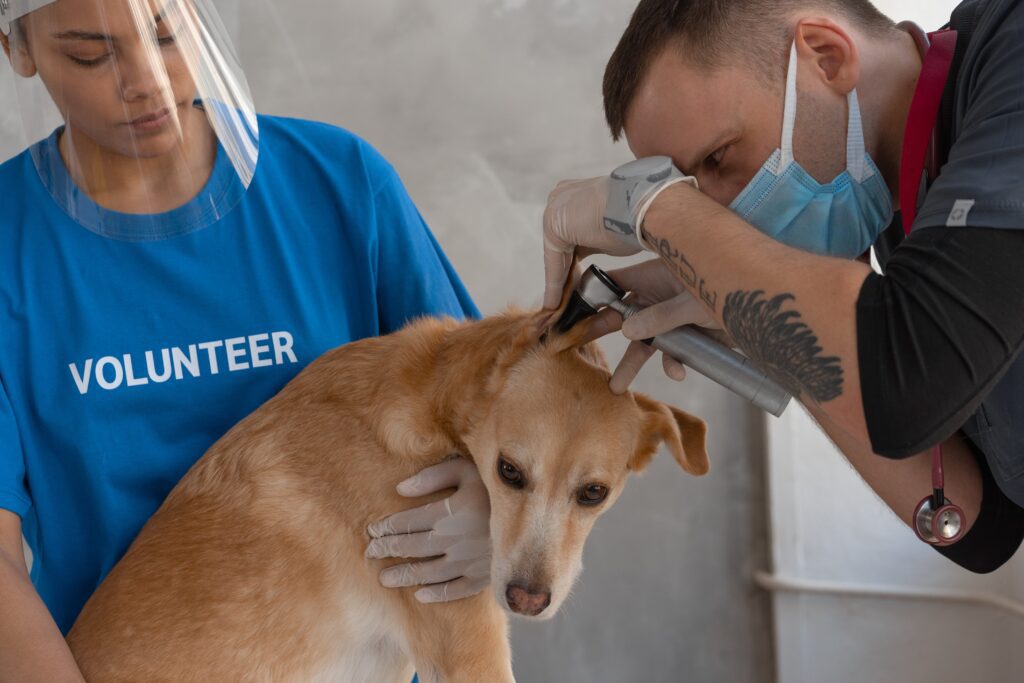Canine distemper, caused by the highly contagious canine distemper virus (CDV), is a serious threat to the health of dogs. Understanding the nuanced symptoms, effective prevention strategies, and available treatment options is pivotal for pet owners to protect their canine companions from this potentially fatal disease. In this comprehensive guide, we will delve deeper into the intricacies of canine distemper, providing in-depth insights into its symptoms, discussing robust prevention strategies, and offering detailed guidance on how to care for and treat dogs affected by this challenging virus.
Understanding Canine Distemper
Causes and Transmission
The canine distemper virus primarily targets the respiratory, gastrointestinal, and nervous systems in dogs. The transmission occurs through direct contact with infected animals or exposure to their bodily fluids, making it a highly contagious disease. The virus is particularly resilient and can survive in the environment, contributing to its ability to spread rapidly.
Common Symptoms
Canine distemper exhibits a range of symptoms, often progressing through different stages. Recognizing these signs is crucial for early intervention:
- Respiratory Issues: Coughing, sneezing, and nasal discharge are common respiratory symptoms. As the virus targets the respiratory system, these signs are among the earliest to appear.
- Gastrointestinal Distress: Vomiting, diarrhea, and a decreased appetite are indicative of gastrointestinal involvement. These symptoms contribute to the overall debilitation of the affected dog.
- Fever: Elevated body temperature is a common early sign of distemper. Monitoring body temperature is essential for early detection.
- Eye and Nose Discharge: Thick discharge from the eyes and nose, often accompanied by inflammation, is a characteristic symptom. This can contribute to further complications, including secondary infections.
- Neurological Symptoms: In advanced cases, neurological symptoms may manifest, including seizures, twitching, and impaired coordination. These signs indicate severe involvement of the nervous system.
High-Risk Groups
Puppies and unvaccinated dogs are particularly susceptible to canine distemper due to their underdeveloped immune systems. Crowded environments, such as shelters or breeding facilities, pose a higher risk of transmission. Additionally, wildlife carriers, such as raccoons and skunks, can serve as reservoirs for the virus, increasing the risk for domestic dogs.
Prevention Strategies
Vaccination
Vaccination is the most effective preventive measure against canine distemper. Puppies should undergo a series of vaccinations starting at around six to eight weeks of age, with boosters administered at regular intervals. Adult dogs should receive routine booster shots to maintain immunity. Consult with a veterinarian to create a tailored vaccination schedule.
Quarantine and Isolation
Swift isolation of infected dogs is crucial to prevent the spread of the virus. Quarantine measures should be implemented immediately upon suspicion of distemper to protect other dogs in the household or community. This includes separating living spaces, providing dedicated food and water bowls, and limiting direct contact.
Hygiene Practices
Maintaining stringent hygiene practices is vital in preventing the transmission of distemper. Regularly clean and disinfect living spaces, including kennels, crates, and toys. Pay particular attention to shared spaces in multi-pet households. Practicing proper hand hygiene, including thorough handwashing after handling dogs, is imperative.
Avoid Wildlife Contact
Limiting contact between domestic dogs and wildlife is a proactive measure to reduce the risk of distemper transmission. Keep dogs on a leash during walks, and avoid areas known to be frequented by wildlife carriers of the virus. Secure trash cans to discourage wildlife scavenging.
Treatment Options
Veterinary Intervention
While there is no specific antiviral treatment for canine distemper, early veterinary intervention is critical. Veterinarians may prescribe supportive care, including intravenous fluids to address dehydration, medications to control vomiting and diarrhea, and antibiotics to prevent secondary bacterial infections. Regular veterinary check-ups are essential for ongoing monitoring and adjustments to the treatment plan.
Symptomatic Treatment
Symptomatic treatment aims to alleviate specific symptoms associated with distemper. This may include the use of cough suppressants for respiratory issues, eye drops for ocular discharge, and nutritional support to address decreased appetite.
Hospitalization
In severe cases, especially in puppies or dogs with compromised immune systems, hospitalization may be necessary. This allows for intensive care, monitoring, and administration of supportive treatments. Hospitalization is crucial for managing severe symptoms and preventing further complications.


Caring for Dogs with Canine Distemper
Isolation
Isolating infected dogs remains essential throughout the course of the illness. This includes providing a separate living space, using dedicated food and water bowls, and limiting contact with other animals. Isolation helps prevent the spread of the virus to healthy individuals.
Nutritional Support
Maintaining proper nutrition is crucial for dogs with distemper, especially if they experience a loss of appetite. Consult with a veterinarian to determine the most suitable diet, which may include highly palatable, high-calorie foods or even syringe feeding if necessary.
Comfort and Support
Offering a warm and quiet environment is important for dogs with distemper. Comfort measures, such as providing soft bedding and minimizing environmental stressors, contribute to their overall well-being. Monitor for changes in behavior and address any signs of pain or discomfort promptly.
Regular Veterinary Check-ups
Regular veterinary check-ups are vital during the recovery phase. Veterinarians can assess the progress of treatment, make necessary adjustments, and address any lingering symptoms or complications. Monitoring for potential long-term effects on the nervous system is particularly important.
Conclusion
Canine distemper is a formidable adversary, but with a combination of preventive measures, early detection, and appropriate veterinary care, pet owners can navigate this challenging condition. Vaccination stands out as the most effective tool in preventing distemper, emphasizing the importance of adhering to recommended vaccination schedules for all dogs.
As responsible pet owners, staying informed about the symptoms of canine distemper, practicing good hygiene, and seeking prompt veterinary care when needed are crucial components of protecting our canine friends. While treatment options are limited, supportive care and attentive management can significantly improve the chances of recovery for dogs affected by this viral disease.
By unmasking the intricacies of canine distemper and taking proactive steps to prevent its occurrence, we can ensure that our beloved canine companions lead healthy, happy lives free from the threat of this potentially devastating virus.
















